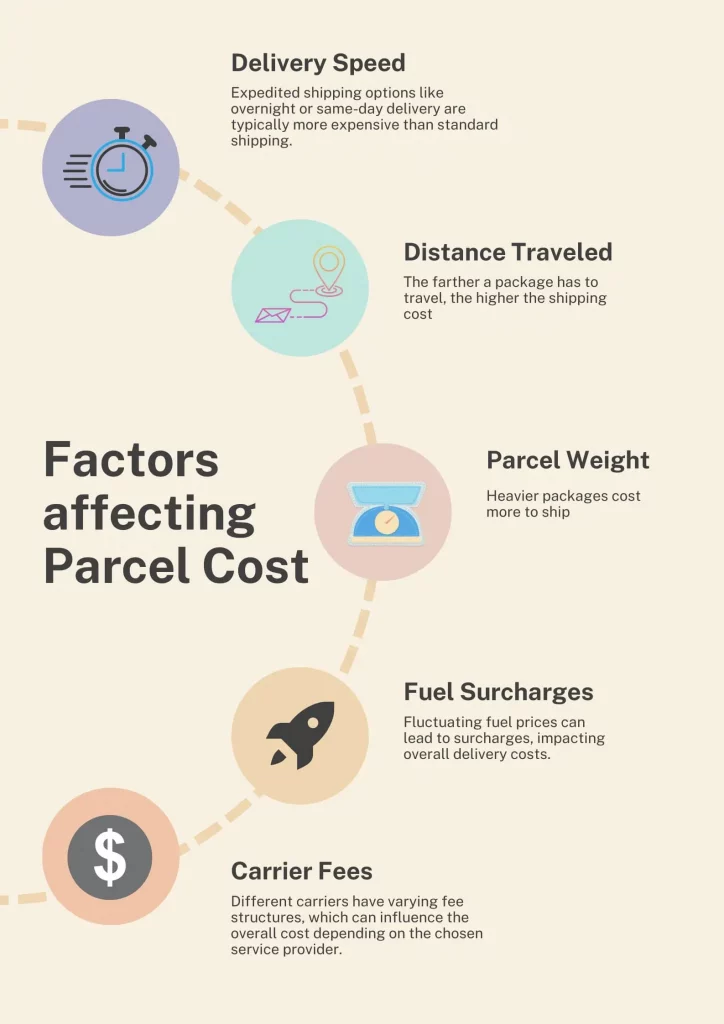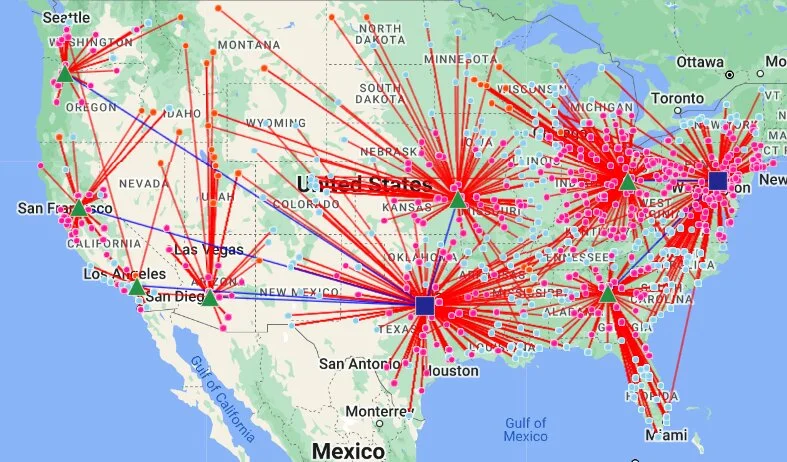Ready to Transform Your Network?
Contact us today to learn more about how our Services can drive success for your business.
Subscribe to receive latest resources on supply chain design
As parcel shipping costs continue to rise, businesses are seeking innovative strategies to control expenses while maintaining efficient delivery services. Network optimization is a powerful approach that can significantly reduce costs and improve service quality. In this post, we’ll explore how businesses can tackle rising parcel delivery costs and surcharges through effective supply chain and logistics network optimization.

Several factors affect parcel delivery costs, such as package weight and size, distance to be traveled, and any additional fees charged by parcel shipping firms. The type of delivery service, whether standard or expedited, can significantly influence costs. Additionally, the destination’s accessibility and the need for special handling or packaging can add to the expenses. Fuel surcharges and seasonal demand fluctuations also contribute to varying shipping costs. These expenses can mount up quickly for companies moving big items across the US. Understanding these factors helps businesses plan their logistics more effectively. Comprehending these cost elements is essential to putting into practice efficient cost-cutting strategies.
FedEx shipping rates have increased by an average of 5.9% for express as well as ground and home delivery USPS Ground Advantage prices will increase by 5.4%, Priority Mail services will increase by 5.7%, and Priority Mail Express Services will increase by 5.9%
Operational Adjustments: Companies need to optimize logistics by negotiating better rates, consolidating shipments, and adjusting delivery routes. Inventory management practices may also change, with businesses maintaining higher inventory levels closer to key markets to reduce shipping frequency and costs.
Customer Experience: Higher shipping fees may be passed on to customers, impacting satisfaction and driving them to seek alternatives with lower costs. Additionally, companies might opt for slower, less expensive shipping options, leading to longer delivery times and potential dissatisfaction.
Competitive Dynamics: Smaller companies with thinner profit margins may struggle more with increased costs, risking loss of market share to larger firms. Innovation becomes crucial, as companies invest in advanced logistics technology and partnerships to mitigate shipping costs and remain competitive.
E-commerce giants like Amazon can absorb some increased costs but still face challenges in maintaining competitive pricing and delivery speed. Medium and small businesses, however, may struggle more, impacting their ability to offer free or low-cost shipping to customers and potentially affecting their market position.

Creating and maintaining a supply chain network strategically in order to reduce expenses and increase efficiency is known as network optimization. Businesses can minimize the impact of surcharges and lower the cost of package shipping by streamlining various areas of the supply chain.
Companies can reduce last-mile delivery costs by using network optimization tools to move inventory closer to customers, utilize zone skipping, and employ cheaper shipping modes.
These tools help network planners analyze optimal positioning of inventory in regional warehouses, reducing shipping distances and speeding up delivery. They can also help facilitate optimal zone skipping configurations by bulk shipping to regional hubs, minimizing zone crossings and leveraging cost efficiencies. Additionally, companies can leverage the scenario functionality of network optimization tools to identify opportunities for cost-effective shipping methods like ground shipping or SmartPost for non-urgent deliveries. These strategies streamline logistics, enhance efficiency, and significantly cut last-mile delivery costs.
Contact us today to learn more about how our Services can drive success for your business.
We’re excited to discuss what problems you are facing and how can you make your existing supply chain more efficient by continuously designing it.